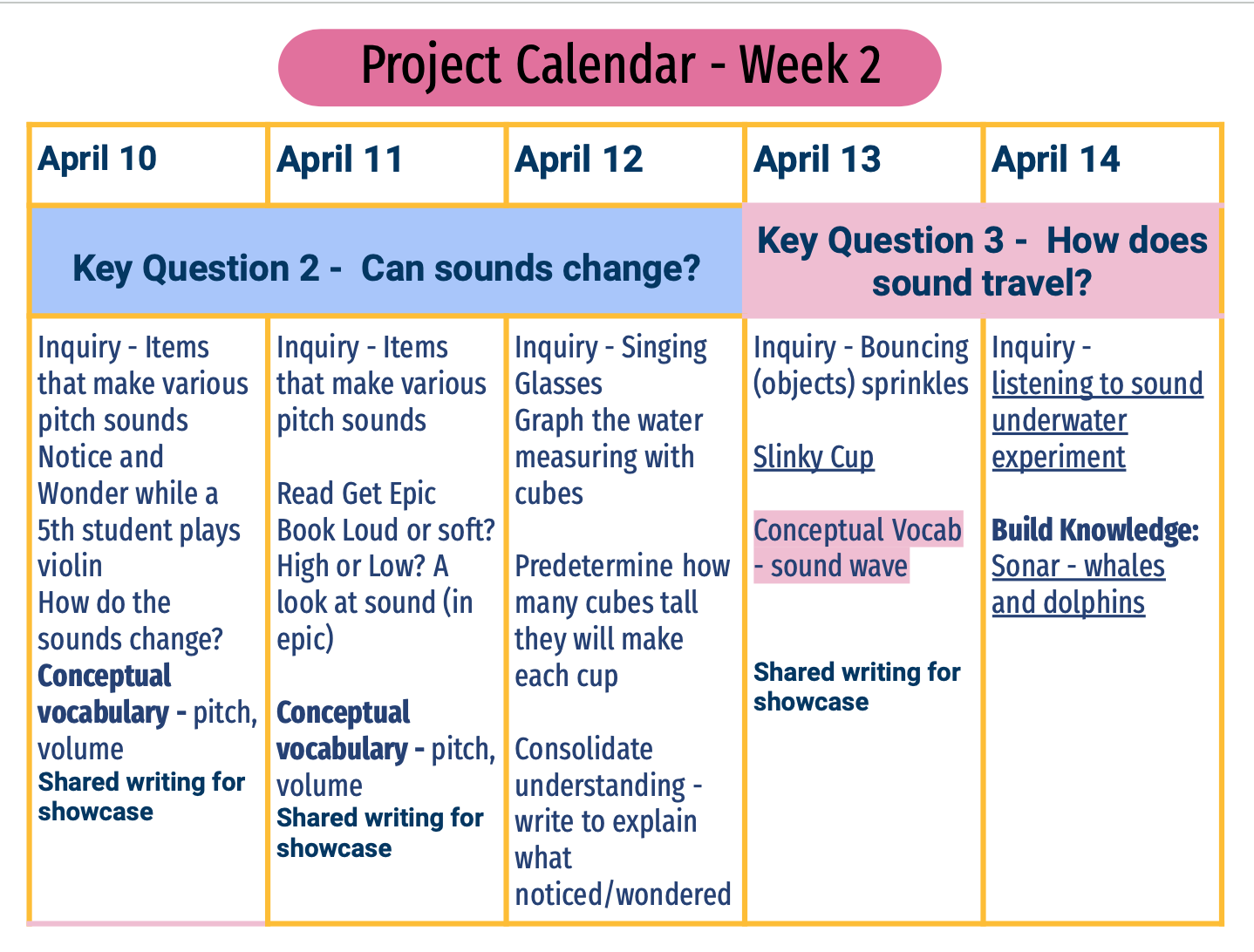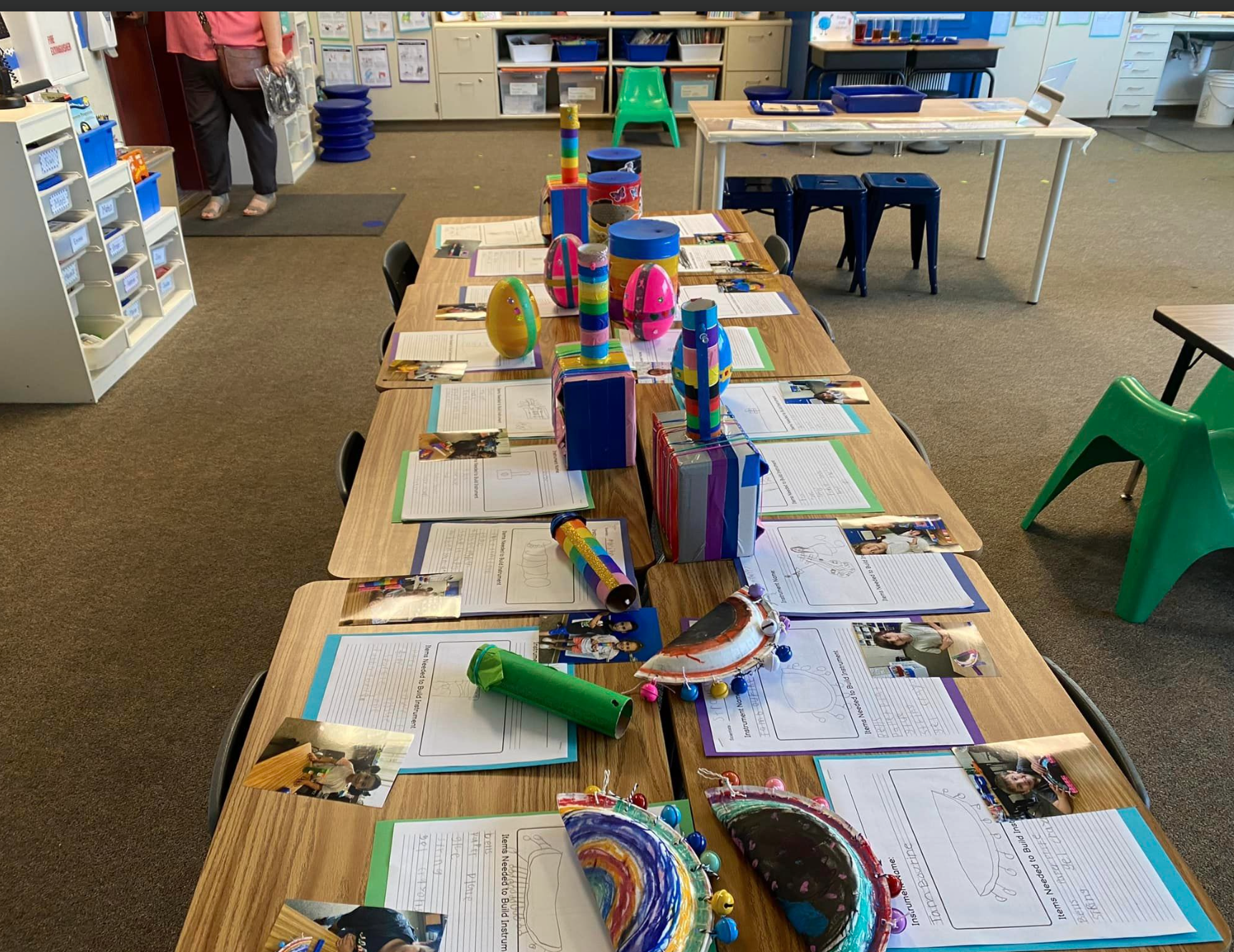Exploring the Wonders of Sound: A Project Based Learning Journey
Sylvan STEAM Academy is a Modesto, California community public school in the Sylvan Union School District. Project Based Learning (PBL) is a key part of the Sylvan STEAM program. In this article, we'll explore a PBL unit focused on the driving question, "How can we investigate sound and share our knowledge with our community?" This project was created by the first-grade team: Bethany Bryant, Kaycee Willems, and myself (Mary Kelley), with the help of instructional coaches Nikki Whorton and Andrea Fuentes. Let's get started!
Inspiration and Planning
Our aim was to design a first grade project aligned with NGSS standards, focusing on sound. We found inspiration and engagement by exploring physical science concepts related to waves, refining the project's scope after a visit to a children's museum. Building on interactive learning experiences and hands-on sound experiments, our final project involved students creating a community sound museum. We used videos, articles and our district curriculum to intentionally integrate literacy and math into this project.
To kickstart the planning process, we started by backward mapping our four learning goals and aligning them with our timeline. We mapped our five learning goals onto poster paper
1. What is sound?
2. Can sound change?
3. How does sound travel?
4. How do you hear sound?
5. Can we create an instrument that produces sound?
We began identifying inquiry events or experiments that would allow students to answer the questions. We developed the procedural vocabulary required for each inquiry event but left the concept vocabulary for the students to define after conducting the inquiries. We supplemented their learning with articles and videos. These inquiry events became the hands-on sound museum displays that students used to guide community members. This model encouraged students to take ownership of their learning by involving them in the project's planning and decision-making processes.
Before introducing the driving question, I took my class on a sound walk to journal the sounds we heard outside. Despite the abundance of sounds in their surroundings—such as the busy noise of the street, the sirens of ambulances heading to the nearby hospital, the voices of preschool students across the fence, and the rumble of buses and deliveries to the district warehouse—students initially lacked an awareness for the sound they were hearing. In response, I revised the entry event and showed the class a "20 mystery sounds" video, prompting them to listen and draw what they heard. This activity proved successful and generated even more sounds that they were aware of in their world. It allowed me to introduce the driving question, "How can we, as scientists, investigate sound and present our knowledge to our community?"
To encourage brainstorming, I asked, "What do you know about sound?" This prompt sparked their curiosity, resulting in a lengthy list of questions that became the driving force behind our instruction.
Conducting Sound Investigations
Students engaged in various sound-related investigations that promoted scientific inquiry and critical thinking, aligning with the four learning targets mentioned earlier. Here are the inquiry events corresponding to each question:
What is sound? Key learning: All sound is vibration.
Mystery Science Lesson: "Be a Sound Effects Artist"
Tuning Fork Inquiry
Can sound change? Key learning: Sounds can change in pitch and volume.
Visiting Student Instrument Inquiry
Singing Glasses Inquiry
Can sound travel? Key learning: Sound travels through air, water, and other objects.
Slinky and Plastic Cup Inquiry
Tuning Fork and Water Inquiry
Headphones and Water Inquiry
Makey-Makey Inquiry
How do you hear sound? Key learning: we hear when sound waves reach our ears and create vibrations that are transmitted to our brains.
Ear Drum Model Inquiry
After each investigation, students created labeled drawings to demonstrate what they learned. They also reflected on their learning by collectively developing conceptual vocabulary related to sound.
Collaborative Learning and Teamwork
During each investigation, students worked in small teams, with assigned roles and responsibilities. Regular check-ins and group discussions ensured that each team stayed on track and benefited from shared knowledge.
Collaboration was crucial for addressing the final question: "Can we make a sound-producing instrument?" Students researched options and collectively voted on five choices: tambourine, maraca, drum, guitar, or kazoo. To aid collaboration, students ranked their top two choices and small groups were formed accordingly. This approach fostered satisfaction and boosted student involvement.
Student-created instruments
Presenting Findings to the Community
The project's finale showcased students sharing sound knowledge at our First Grade Sound Museum. They created displays for each activity, aiding family and community comprehension. This empowered students to communicate, build confidence, and develop speaking skills as they guided visitors. The event attracted more than 55 community members, and students proudly showcased their knowledge.
Reflection
When we do this PBL in the future, we would like to incorporate the facilitators' efforts to include student and familial knowledge of sound and instruments. This will help build ownership and foster inclusivity within the project. By embarking on a project-based learning journey centered around the driving question, "How can we, as scientists, investigate sound and present our knowledge to our community?," students became active participants in their education. This approach nurtured critical thinking, scientific inquiry, and effective communication skills, preparing students to become lifelong learners and valuable contributors to society.
Mary Kelley is an educator with 18 years of experience in K-3 teaching. She has an M.Ed. degree in education instruction and curriculum. She is passionate about inquiry-based learning, as it encourages critical thinking and curiosity in young minds. Mary believes that quality science instruction is an equity issue for all students and aims to enhance it through collaboration and knowledge sharing with other educators.



